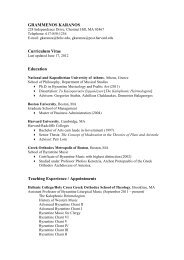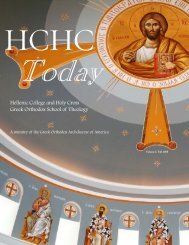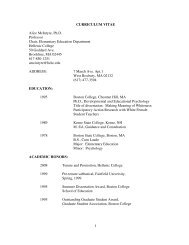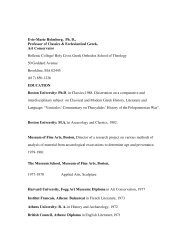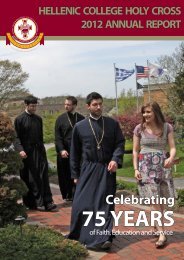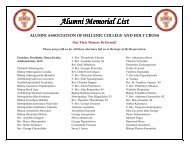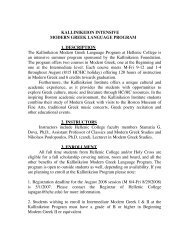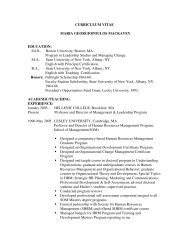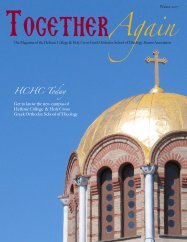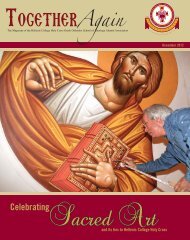GREEK, ROMAN AND BYZANTINE OBJECTS ... - Hellenic College
GREEK, ROMAN AND BYZANTINE OBJECTS ... - Hellenic College
GREEK, ROMAN AND BYZANTINE OBJECTS ... - Hellenic College
Create successful ePaper yourself
Turn your PDF publications into a flip-book with our unique Google optimized e-Paper software.
This tradition continued with the imperators (emperors), although<br />
emperors also issued coins that featured some of the traditional deities and<br />
personifications found on earlier coins. The portrait of the emperor became the<br />
focal point of imagery during the Early Empire and the Later Roman period as<br />
coins were a convenient means to disseminate the image throughout the vast<br />
empire. The emperor was often associated with divine attributes or pictured with<br />
particular deities, emphasizing the special relationship between them. The<br />
majority of obverse images have portraits of the emperor but other portraits were<br />
also used such as the heirs apparent, predecessors and other family members,<br />
such as empresses. In order to aid the claims of succession, the legitimacy of an<br />
heir was indicated by issuing coins in his name, a practice that began under<br />
Augustus and continued until the end of the Byzantine period. The portraits<br />
were usually stylized and lacked originality although generalizations should be<br />
avoided. During especially turbulent times, such as the fraught third century, the<br />
emperors resorted to the more traditional images, perhaps in an attempt to<br />
establish their legitimacy which often was questionable.<br />
Diocletian also introduced a standard imagery on the coins during his<br />
reforms. This consisted of a stern portrait, representative of the emperor in<br />
general, rather than any individual emperor. The reverse was equally abstract,<br />
usually featuring the genius (spirit) of the Roman people personified. It has been<br />
argued that this imagery was an attempt by Diocletian to instill a sense of peace,<br />
stability and traditional values within the Empire following the insecurity and<br />
conflicts of the previous period.<br />
With the adoption of Christianity as the state religion of the Roman<br />
Empire, Christian imagery, such as the Christogram (the Χ Ρ monogram for the<br />
name of Jesus Christ in Greek), was introduced but there were no explicitly<br />
Christian themes with a few notable exceptions.<br />
The original Roman mint network was reorganized and centralized by<br />
Diocletian as part of his monetary reforms. Each provincial diocese had only one<br />
mint, which in the case of large mints, could have several officinae (workshops).<br />
Over the next two centuries, some of these mints were closed and others opened<br />
depending on the fiscal and administrative necessities. Emperors also had mints<br />
attached to their comitatus (retinue) In 366-9, legislation restricted the issuance of<br />
precious metal coins to these imperial retinue mints, either from permanent<br />
bases, or when campaigning, making use of the nearest regional mint to the<br />
imperial retinue. Following the major invasions of the Germanic tribes in the<br />
West during the fifth century, the Roman mint network system collapsed with<br />
13



